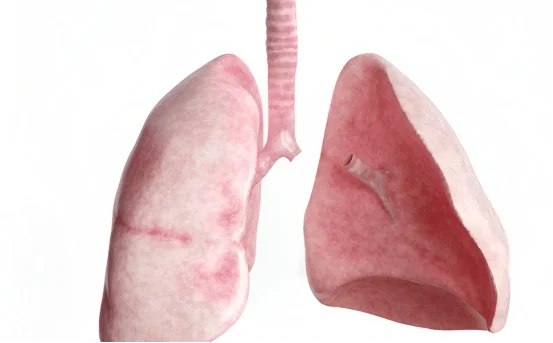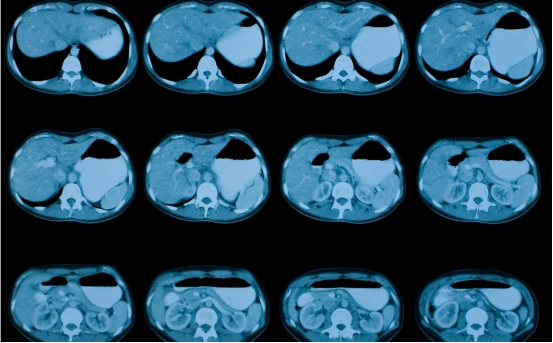Pneumonectomy is an extensive surgical intervention that entails the total resection of a single lung. Although it ranks among the more radical chest procedures, surgeons may elect to perform it in cases of malignant neoplasm, refractory pulmonary infection, or severely compromised parenchyma resulting from blunt or penetrating injury. When lung tissue can no longer sustain respiration or poses an immediate threat to the patient’s survival, pneumonectomy often becomes the preferred—and sometimes the only—life-saving alternative.
For practitioners, as well as patients contemplating this decisive course of action, it is imperative to grasp the various forms of pneumonectomy, specifically the types of pneumonectomy surgery. Choice of technique hinges on the etiology of disease, anatomical considerations, and the individual’s overall physiological reserve.
Primary Indications for Pneumonectomy
Understanding the Different Types of Pneumonectomy Surgery
Surgeons regard pneumonectomy as a last resort, typically after alternatives such as lobectomy or segmentectomy have been deemed inadequate. The principal indications include:
- Malignancy:- Non-small cell lung cancer (NSCLC) represents the leading impetus for removing an entire lung, especially when the neoplasm abuts the carina or extensively invades both ipsilateral lobes.
- Inflammatory Disease:- Chronic conditions—including advanced bronchiectasis, extrapulmonary tuberculosis, and lung abscesses—that reduce functional lung volume to less than required for adequate gas exchange frequently necessitate resection.
- Acute Mechanical Trauma:- Catastrophic chest injury, characterized by shattering of pulmonary architecture or relentless hemorrhage, may compel the surgeon to proceed with an emergency pneumonectomy as part of lifesaving thoracic repair.
- Congenital Abnormalities:- Occasionally, patients born with serious congenital anomalies—such as complete agenesis of the pulmonary artery or extreme structural defects of the lungs—require surgical resection of a lung early in life. These situations are infrequent but illustrate the range of conditions that can affect respiratory development.
Types of Pneumonectomy Surgery
Pneumonectomy is not a single procedure; it varies by the quantity of lung removed, the access route chosen by the surgeon, and the underlying anatomy involved. The primary categories are outlined below:
Standard Pneumonectomy
A standard or simple pneumonectomy entails en bloc removal of either the right or left lung. This operation remains the most frequently performed version, especially for patients with large, central lung cancers that cannot be managed by less extensive resections.
- Right Pneumonectomy: The entire right lung, composed of three lobes, is excised.
- Left Pneumonectomy: The two-lobed left lung is removed.
- Surgical Approach: General anesthesia is paired with a posterolateral thoracotomy incision, allowing direct access to the thoracic cavity.
- Indications: It is indicated for bulky central tumors, severely infected lobes, or chronically collapsed lungs.
- Risks: Complications are relatively more severe than with lobectomy, as the hemodynamic strain on the heart and contralateral lung is heightened.
Sleeve Pneumonectomy
In a sleeve pneumonectomy the surgeon not only resects a lung but also cuts out a segment of the main bronchus and subsequently reanastomoses it.
Who Needs It? This technique is reserved for patients whose malignancies invade the bronchial tree yet have not metastasized beyond the chest.
When a complete removal of a lung is not warranted, a sublobar resection can often spare a considerable amount of functioning lung tissue. This option, therefore, serves as a middle ground, retaining more pulmonary parenchyma than a standard pneumonectomy would.
Such a procedure, however, demands the hand of a thoracic surgeon with considerable experience, since managing the bronchial anatomy afterward can be technically challenging. Patients will typically require some form of airway reconstruction, whether it be end-to-end anastomosis or a more elaborate solution, to ensure ventilation remains adequate.
Extrapleural Pneonectomy (EPP)
The extrapleural pneumonectomy takes a far more aggressive stance, excising not just the entire lung but also a significant swath of the surrounding structures: a segment of the diaphragm, the pleura that encases the lung, and occasionally a portion of the pericardial sac that cushions the heart.
Designed mainly for patients diagnosed with malignant pleural mesothelioma—the rare, asbestos-linked tumor—the EPP is reserved for cases where the disease is localized enough to permit an en-bloc removal.
Pneumonectomy with Cardiopulmonary Bypass
In exceptionally complex scenarios, a lurking tumor may infiltrate key vascular channels or myocardial cavities, complicating the surgical landscape even further. When such invasion involves the pulmonary artery or the left atrium, surgeons may resort to a complete pneumonectomy while placing the patient on extracorporeal cardiopulmonary bypass. This maneuver dictates a multidisciplinary team, hence its confinement to only the most advanced tertiary-care hospitals.
Video-Assisted Thoracoscopic Pneumonectomy (VATS)
Though never routine, the rise of vide-assisted thoracoscopic surgery—and its robotic cousin—has made a minimally invasive pneumonectomy conceivable for carefully selected patients. Smaller incisions translate into markedly shorter hospital stays and a reduction in post-operative pain, yet this technique is barred from large tumors that demand wider fields of view.
What to Expect Before and After Your Procedure
Preoperative Evaluation
In preparation for lung surgery, your care team will perform several tests to gauge your overall health. Pulmonary function tests, or PFTs, measure how well the lungs take in air and exchange gases. Based on those results, doctors can tailor the procedure to your needs. A cardiac risk assessment, often involving an ECG and sometimes an echocardiogram, helps identify any existing heart issues that may complicate surgery. Imaging studies, typically a CT scan or occasionally a PET-CT scan, provide detailed pictures of the chest to guide the surgeon. Finally, a few routine blood tests and, if indicated, a flexible bronchoscopy allow physicians to look for signs of infection or other abnormalities in the airways.
Recovery and Rehabilitation
Most patients remain in the hospital for about 7 to 10 days after a pneumonectomy, although this can vary based on individual circumstances. The initial recovery period lasts roughly 4 to 8 weeks during which ample rest and gradual activity are key. To support lung function, many patients will go home with portable oxygen, are instructed to perform daily breathing exercises, and participate in supervised physiotherapy. Patients are also strongly encouraged to quit smoking, limit strenuous lifting or exertion, and keep all follow-up appointments to monitor healing.
Risks and Complications
As with any major surgery, a pneumonectomy carries risks. Post-pneumonectomy syndrome—characterized by fluid accumulation and breathing difficulties—remains a concern, as do more acute challenges such as respiratory failure and postoperative infections. Cardiac complications can arise from changes in chest pressure, while empyema, an infectious fluid collection in the pleural space, may require additional drainage. These outcomes are not inevitable, and the likelihood of complications decreases significantly when experienced surgeons carefully evaluate and select patients.
Conclusion
Familiarity with the various forms of pneumonectomy, from standard resections for lung cancer to extrapleural procedures for mesothelioma, enables patients and families to engage meaningfully in treatment planning. Consulting a board-certified thoracic surgeon at a specialized center with a multidisciplinary team usually yields the best results. Provided patients adhere to supportive care guidelines, many go on to enjoy a satisfying quality of life even after losing an entire lung.























